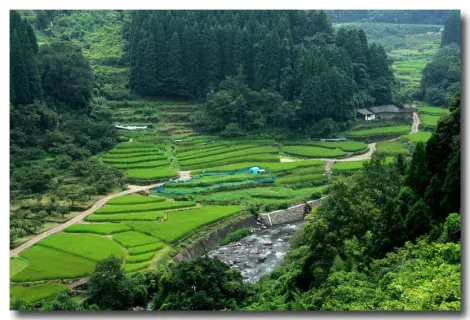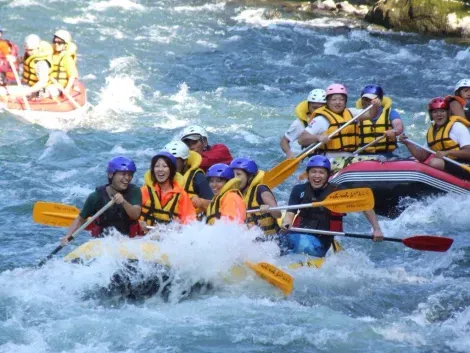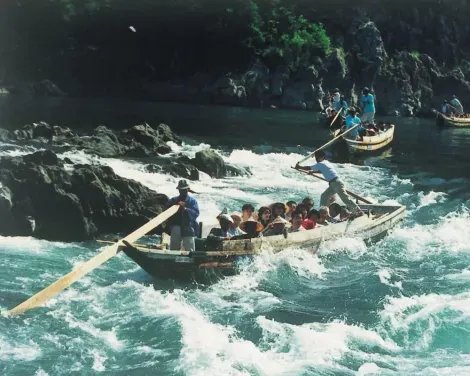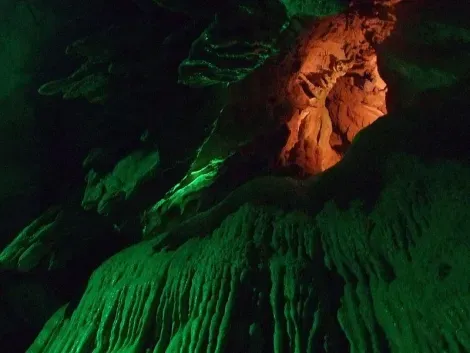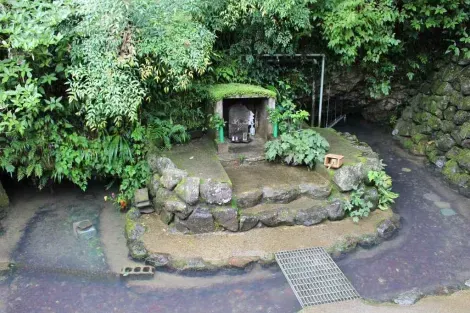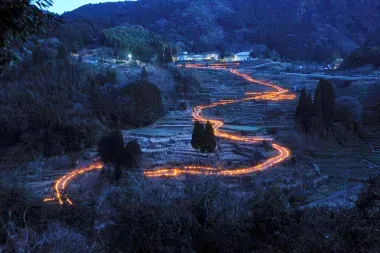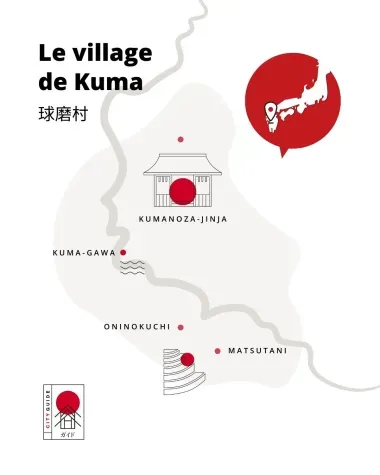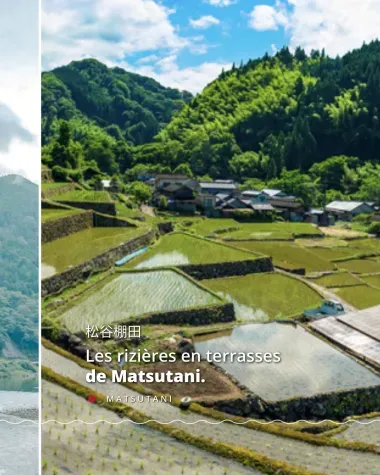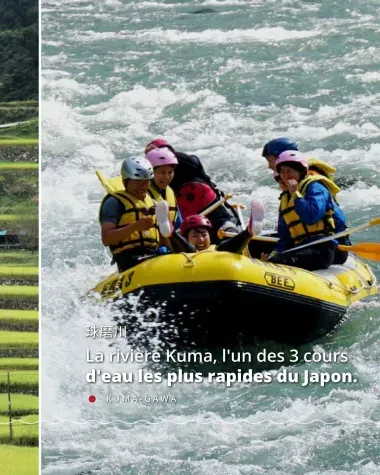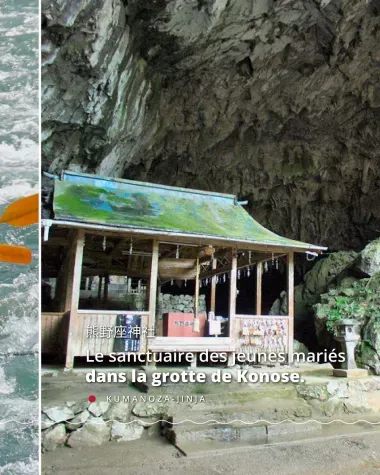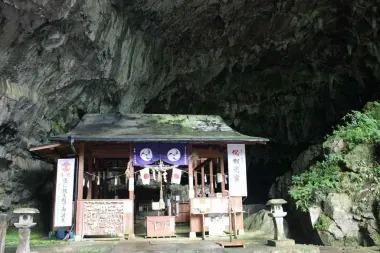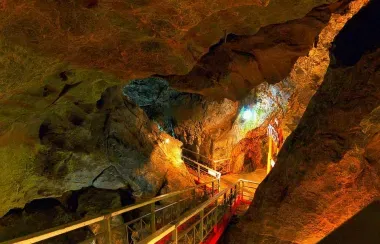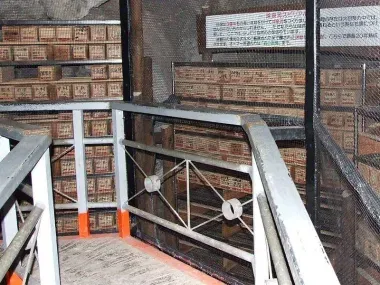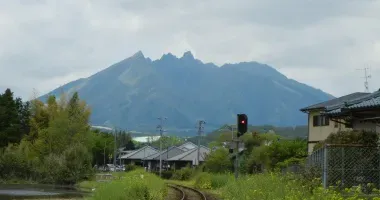Kuma Village 球磨村
- Published on : 09/07/2018
- by : S.V.
- Youtube
Underground and on the water
In the south-west of Kumamoto prefecture, the small mountain village of Kuma, with its striking natural beauty, takes you for a day or a weekend both underground and on the water. !
A secular landscape
This rural territory, crossed by the waters of the Kuma-gawa river, still has the original landscapes of the Edo period . This hitherto immutable setting is made up of orchards and rice terraces.
Presenting itself to the visitor on the gentle slopes of the village, this natural heritage with a strong cultural dimension is one of the major assets of Kuma-mura.
To read: The 1000 rice fields of Maruyama Senmaida
The Matsutani and Oninokuti rice terraces , ranked among the 100 most beautiful rice fields in the archipelago and located two kilometers from Naraguchi station along Route 325 for the former and two kilometers from Katsuri station on the prefectural road 15 for seconds, produce excellent quality mountain rice . A 12 kilometer pedestrian route through the rice fields and pear trees located near the bed of the river allows you to fully appreciate the place. In May, during the Satoyama matsuri, the illuminated rice fields of Matsutani can be contemplated from tea houses specially installed for the occasion on the observation promontory.
Along the water
The Kuma-gawa, one of the three fastest rivers in Japan , is a magnificent playground for lovers of sports and thrills. A short descent of rapids in rafting, do you like it? Two courses are offered: the "seiryu" for a discovery of the raft, an 8 km course between Hitoyoshi and Kuma and lasting 90 minutes or the "kyuryu" for a sporty descent of 10 km linking Watari to the Kyūsendō cave . To live the thrilling adventure of "Kyuryu", remember to book in advance because it is only open from April to the end of October.
In rafting, some will prefer the kumagawa kudari . It must be said that this large traditional wooden boat, masterfully maneuvered by skilled boatmen, has the charm of yesteryear. Narrow and flat-bottomed, these boats have been used since the Edo period to transport people and goods. This use ended in 1908 following the establishment of a rail link serving the region, confining the kumagawa kudari to the role of tourist attractions.
See also: Seven Stars, Kyushu's luxury train
From cave to cave
Northwest of Kuma, not far from the river, the newlyweds go to Kumanoza-jinja to be granted a divine blessing. This small sanctuary founded in 1427 has the particularity of being located at the entrance of the Konose cave. 7 meters high, 45 meters long and 70 meters deep, the limestone cave is a formation dating from the Mesozoic era (251 to 65.5 million years), designated as a natural treasure of the prefecture. At the entrance to this picturesque place, sacred water, believed to be able to give you eternal life, flows from a fountain.
A second cave is the pride of the small village.
The Kyûsendô cave , on the right bank of the Kuma-gawa was discovered in 1973 by a research team from Ehime University. Formed 300 million years ago, it is nicknamed the “bat nest” because of the 20,000 specimens that occupy it. Rest assured, you are not likely to come across one during your stroll between the stalactites and stalagmites because they live in the depths of the cave not open to the public. Equipped with a helmet and a headlamp, you will descend to 200 meters underground in the company of a guide . The incongruity of the visit will come from the shôchû cellar. Indeed, the association in charge of the preservation of the site authorizes the distilleries of the famous kuma shôchû of the region, on prior request, to store their bottles for 20 years in the cave . The tasting is unfortunately not included in the visit!
Address, timetable & access
Address
Phone
0966-32-1111Timetable
The village has three train stations: Watari, Naraguchi and Isshōchi Accessible from Kumamoto in 1h30Website
http://www.kumamura.com/





